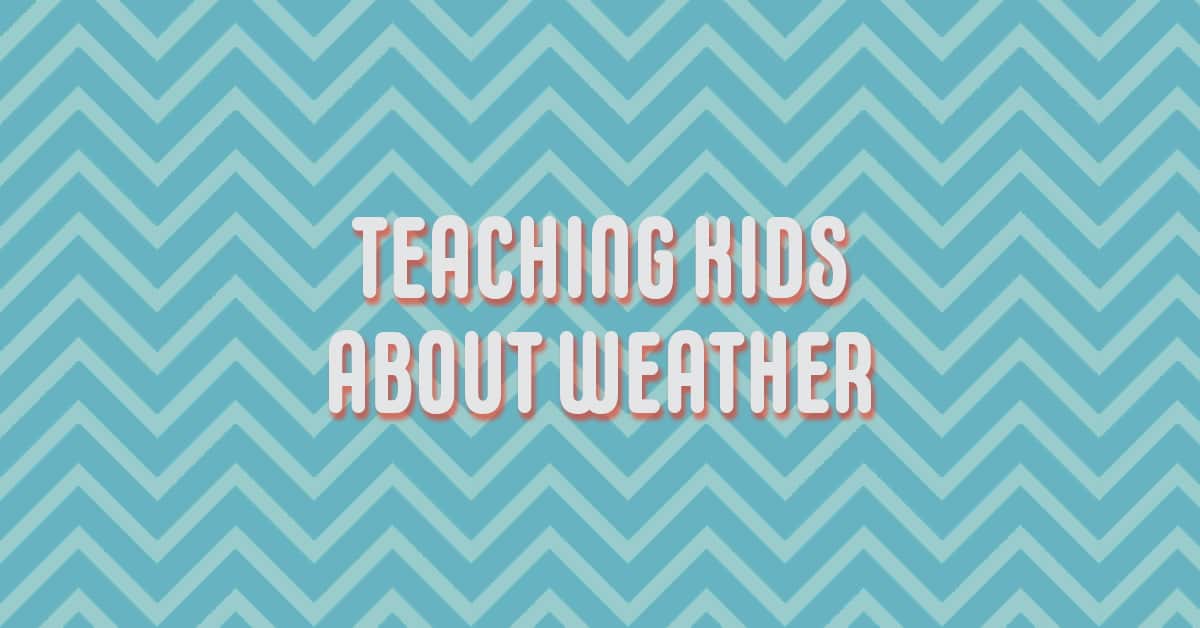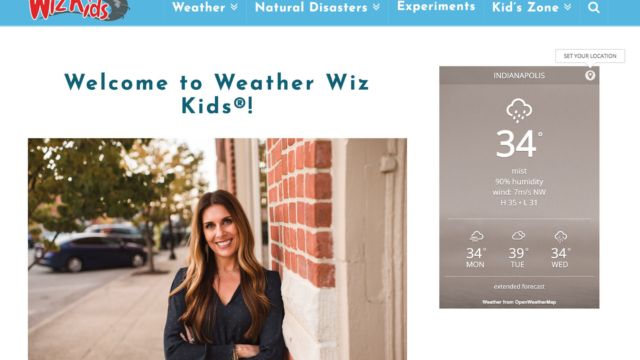Shanna Martin 0:19
Thanks for listening to the Tech Tools for Teachers Podcast, where each week we talk about a free piece of technology that you can use in your classroom. I’m your host, Shanna Martin. I’m a middle school teacher Technology and Instructional Coach from my district and I’m
Fuzz Martin 0:33
a producer and husband Fuzz Martin and whether it’s editing or producing the show. It’s always cool.
Shanna Martin 0:40
No, I just wait everybody all the weather puns are coming out today whether
Fuzz Martin 0:46
there was so many that was easy like it was gonna whether
Shanna Martin 0:51
or not which one did you
Fuzz Martin 0:55
I didn’t want to get snowed on my choice. I I almost had analysis paralysis coming up with which which pond? I’m like, there’s so many
Shanna Martin 1:04
to news. Yay. Well, we just came in throughout the show today.
Fuzz Martin 1:08
Deal. Buckle up listeners. All the
Shanna Martin 1:11
weather. So, Episode 148. We are here. Yeah, we are ending January starting February here in the longest time of the school year slash winter. Yes,
Fuzz Martin 1:26
the 28th longest days of the year.
Shanna Martin 1:29
It’s cold in Wisconsin and this week we are talking about weather. So this stems from a couple of things. Obviously, the weather outside is frightful. And we have always, you know, lots to talk about those of you that are not from Wisconsin listening. You get hopefully a good sense of what we experience here on a regular basis. Yes. And then also, I’m doing a project with my students, like coincides with a, I guess, project that the science teacher that we do combined science socialist project, based on the Titanic, that’s gonna be a whole episode, I’ve decided we’re gonna do resources on Titanic research, right? And then we like talking about the weather that day anyway. So we’re always looking for fun weather resources so that students can research independently, that they can build this into their science lessons. And also, because it’s interesting and applies to all of us every day. Weather is something that that you experience all the time.
Fuzz Martin 2:24
Yes, whether you want whether you
Shanna Martin 2:27
just didn’t want to say it, but I just said okay, so we have two other websites today. One is very informational, with lots of cool resources. And then the other one is a little more focused on a certain type of weather. So the first one is called weather wiz kids dot com. So weather wiz Kids dot com, weatherwizkids.com. And what’s cool is this was created by a meteorologist in Indiana. And all of these tools are created for students to learn more about weather, which I think is awesome. So let’s walk you through it. So whether it is weather Whiz Kids, and there’s tabs across the top of the screen that give you all kinds of information. So if you want to learn about weather and climate, clouds, drought, hurricanes, lightning, optical illusions, rain, and floods and storms, like pick a topic, you can have all of the ones that you want to learn about. Let’s try thunderstorms today. So if you click on thunderstorms, they give you what I appreciate about this, it’s really easy for student research. So if you have students first or second grade, with probably a Google read and write on there, so it can be read to them. But younger students could use this for very easy research. Older students can find the question they’re asking and find the information that they need to. So like, what is a thunderstorm, it gives you the background, it explains the difference between the difference between like a severe thunderstorm and just a regular thunderstorm. The stages of a thunderstorm. It’s all just very neatly laid out the question the response, usually an image showing actual, like, an example of the weather, or a map that goes with it. And then it gets into more technical terms like what is a bow echo? It’s a type of radar signature of a squall, like, like so it goes further and further in as you scroll through. And there’s a whole page of all kinds of cool information on thunderstorms. Back under that weather tab. Again, if you’re looking for something cool, like you want to learn more about wind and how like fronts work and things like that. Questions and Answers. It’s a great way to get quick information. Again, easy to understand for students. Natural disasters are in there. So earthquakes, landslides, sinkholes, tsunamis, volcanoes. You and I just both finished reading a book, the newest book by Alan grants, talks about due to global Yeah, two degrees, and it’s fantastic.
Shanna Martin 4:56
My students of all I have two copies of my classroom already checked out all the time and To what I thought was cool in that book, it kind of leads you into information about wildfires and things like that. But if you want students that don’t have a bunch of background knowledge, this is a great way to see like, what is a tsunami? What is a wildfire? And again, is that that great question answered diagram laid out simply for kids to understand, which I appreciate. And so that’s kind of cool.
Fuzz Martin 5:24
You look whether WizKids also has KidZone with weather jokes. Like
Shanna Martin 5:29
I’m not there yet, but I knew that you’re gonna find this. So well, well, what did you think of this one? What do you got?
Fuzz Martin 5:34
I’ll give you our youngest daughter’s favorite. Go for it. What is the cloud were under his raincoat?
Shanna Martin 5:41
Thunderwear? We must hear that joke like every day
Fuzz Martin 5:45
One more… What’s the difference between a horse and the weather? I don’t know. One is reined up the other rains down? Oh, do you use all these with our child after this after we’re done recording,
Shanna Martin 5:55
fantastic. And we’ll even leave, it’ll save you some time at the end that you could just okay, just keep on going.
Fuzz Martin 6:01
There’s a whole long page.
Shanna Martin 6:03
Great. So after natural disasters, again, you can tie it into research. If your students are reading that new book that just came out like that would be a great like, hey, we could learn more information, that would be great. They also have experiments which I was going through, and they’re so easy, and doable. Not like super easy, but doable. So like, for making a thunderstorm you need a clear plastic container, like the size of a shoebox and red food coloring and some ice cubes and blue and blue food coloring. So it gives you the materials, it gives you the process, then the explanation behind it. And then you can do a little more research if you’d like to, they have tracking a thunderstorm, which is my favorite. All you need is a thunderstorm and a stopwatch to go outside and track it. But there’s all kinds of cool experiments like a balloon in a bottle. How do you make your hair stand up making rainbows? Where’s the wind, what’s in the wind? Make a thermometer. So there’s a whole list of you’re looking for. I always like to like if students are looking for like science fair projects, this would be a great thing. If you’re looking just to do hands on things and more like at home, like take home TRY THIS AT HOME kind of like science, they can track the weather so easily. We all experience different types of weather. So there’s all kinds of cool ideas in that experiments zone that you can click on Try out send home, have kids try kids that want to just learn more, because they’re interested in it, you could definitely send them onto that page. And like here, once you pick an experiment, we can try it out as a class, that kind of thing. So there’s just all kinds of very cool, weather related, very kid friendly to use early elementary through middle school, you know, when they’re on their own research and having an authentic site that actually is accurate information is always helpful. So Weather Wiz Kids, and then yes, and the last column, There are jokes, there’s weather, folklore, there’s careers, questions, other links, there’s flashcards that are all different kinds of topics. And then weather games. So there’s definitely resources the weather games when isn’t loaded in yet. They’re still adding to that but weather jokes and other links you do have access to so you got another joke for us.
Fuzz Martin 8:14
Another joke of course I do. How do hurricane see? I don’t know with one eye.
Shanna Martin 8:22
Nice. All right, you can say one for the end two. Okay. I will say one for the Alright, so that is weather Whiz Kids. Check it out. Share it with your students. Again, great resource for weather and all the things happening. So our second weather related sites, whether or not you’re interested in snow crystals, choice, bringing the thunder, but it’s next one is snow. crystals.com. So right now, it does happen to be snowing lightly outside. I believe in the next couple of, I don’t know 24 or 48 hours. We also get like six inches, we’ll see what happens. Like keeps changing. But Snow crystals.com snow crystals dot com. Snowcrystals.com is such a cool way to look at snow. So besides cutting out paper snowflakes, and sometimes you can grow them in a jar with like sugar. This site explains, like designer snowflakes, and how they grow them in a lab. Okay, or then you create your own design. It’s just fascinating. So there’s several different categories of information here. They have natural snowflakes, and they have them under a microscope. They look fake, like they do not look real. They have them under a microscope so you can really see these designs and patterns. And I feel like way back in the day we used to read the book, snowflake Bentley. That was like a true story about someone who looked photographed early snowflakes way back in the day. This reminds me of that. So it talks about like the different types of crystals and the shapes. And then you can explore like photos and then guides and there’s different fun facts about snowflakes. but they have designer snowflakes. So if you click on designer snowflakes, it will walk you through what it is. And then different images that an if you’re creating I think like art or writing about snow or how it works or the science behind it, how they create the crystals, what that looks like, and then how like water droplets can change depending on like condensation and how they can make it look like it’s fascinating. And it’s cool. Like it’s easy, just like let’s learn about designer snowflakes today. You know, if you got a really like snowing outside or if you don’t have any snow in your area at all. Everyone’s like, ah, snow, like what a cool way to learn about it because it’s so pretty talks about growing snowflakes. And then they have like, kind of videos of watching and slow motion like how they create them and how they have like a high resolution version of how these snowflakes are created,
Fuzz Martin 10:52
even videos and to tell how much it cost to make the snowflake creator.
Shanna Martin 10:57
Yeah, which is cool, very expensive to and then snowflake science. So if you click on that link, it explains what a snowflake is. How these symmetrical shapes work and why no two are a like a groat. Like it talks about these different pieces and like the growth of them and simple snowflakes versus asymmetry versus the different like sharpening of the shapes and how they morph, it’s just, to me a snowflake, you’ll just see like, oh, it’s snowing, it’s pretty most of the time unless you drive me like, oh, it’s snowing, I gotta go driving it. But all of the science and the cool creations behind it, and then it kind of it could be very, like art inspired. But also science and geometry like math. This site, you could tie in snow into any of those subject areas. And even like, with younger students, you could only just show these and show the images and talk about the videos versus older kids. We all right, like let’s how does this work in math? Like show me the asymmetry? Like what are we looking at for if we were to graph this in like Desmos, or something like there’s just so many cool ways to build this set of information into other lessons, I think would be super cool. And then if you scroll down the page a little bit, they also have like fun lengths, like myths and nonsense, like, what is not okay, like is snowflake like is there a perfection within snowflakes and all kinds of stuff. And then they have snowflake fossils and they have how to preserve like snow crystals and resin. They’ve all just kinds of cool information. So snow crystals.com has all of these cool pieces of information about snowflakes that I guess I would never take it that far like not after until reading this. And I was like well as we need another talk. They have other categories to keep scrolling down the page, leave other resources to take you to different other like snow based websites. So what a cool website, it’s created by a different professor in physics in California, and just a neat way to learn more about snow and kind of look at the beauty of it and the science and the math behind it. Snow crystals.com
Fuzz Martin 13:08
Also, kudos to Professor Kenneth Lebrecht. He’s had the situps since 1999.
Shanna Martin 13:14
Nice. Yeah. And it still is very relevant. Yeah, it is. Yes,
Fuzz Martin 13:18
it is. It’s still very relevant and pretty and usable. just chock full of information. more information than you ever thought existed
Shanna Martin 13:26
on snowflakes. Absolutely. It’s really good. Yeah. So you just pick and choose. There’s even like books to learn more about. I know it’s just very neat. It was a neat find. No crystals.com
Fuzz Martin 13:35
Hey, Shana, how come the snowman didn’t show up to the party?
Shanna Martin 13:39
He melted away?
Fuzz Martin 13:42
He flaked out. I came up with that one.
Shanna Martin 13:49
Yes. Oh, you should like right in Hey, we can’t do that. If anybody’s gonna really fun snow based joke or a weather based joke. You could just tag me on Twitter and we’ll see what happens.
Fuzz Martin 14:00
Yeah, we’ll send it send it to the author of weather whiz kids.com. And she can put it up on our site.
Shanna Martin 14:06
Teacher sticker,
Fuzz Martin 14:07
what happens when the fog lifts in California? UCLA? Oh,
Shanna Martin 14:15
okay. Okay, that’s fine. Yeah, that was fun. Note. Whether you’re interested in whether or not your students probably would learn a lot. Thanks for tuning in. This has been the tech tools for teachers podcast. If you ever have any questions, you can find me on Twitter @smartinwi. And if you want to get more information on the links of the technology discussed in this episode, you can visit smartinwi.com Check out that little ed tech directory and or share that with staff members. If you’d like to support the show, please consider buying me a coffee or to visit buymeacoffee.com/smartinwi or visit smartinwi.com and click on that cute little purple coffee cup. Your donations help keep the show going and are always appreciated. New episodes each week. Thanks for listening, go educate and innovate.
Fuzz Martin 15:02
The ideas and opinions expressed in this podcast and the smartinwi.com website are those of the author Shanna Martin and not up for employer. Prior to using any of the technologies discussed on this podcast please consult with your employer regulations. This podcast offers no guarantee that these tools will work for you as described, but we sure hope they do. Hey, Shana, what happens when it rains, cats and dogs. You have to be careful not to step it up poodle












